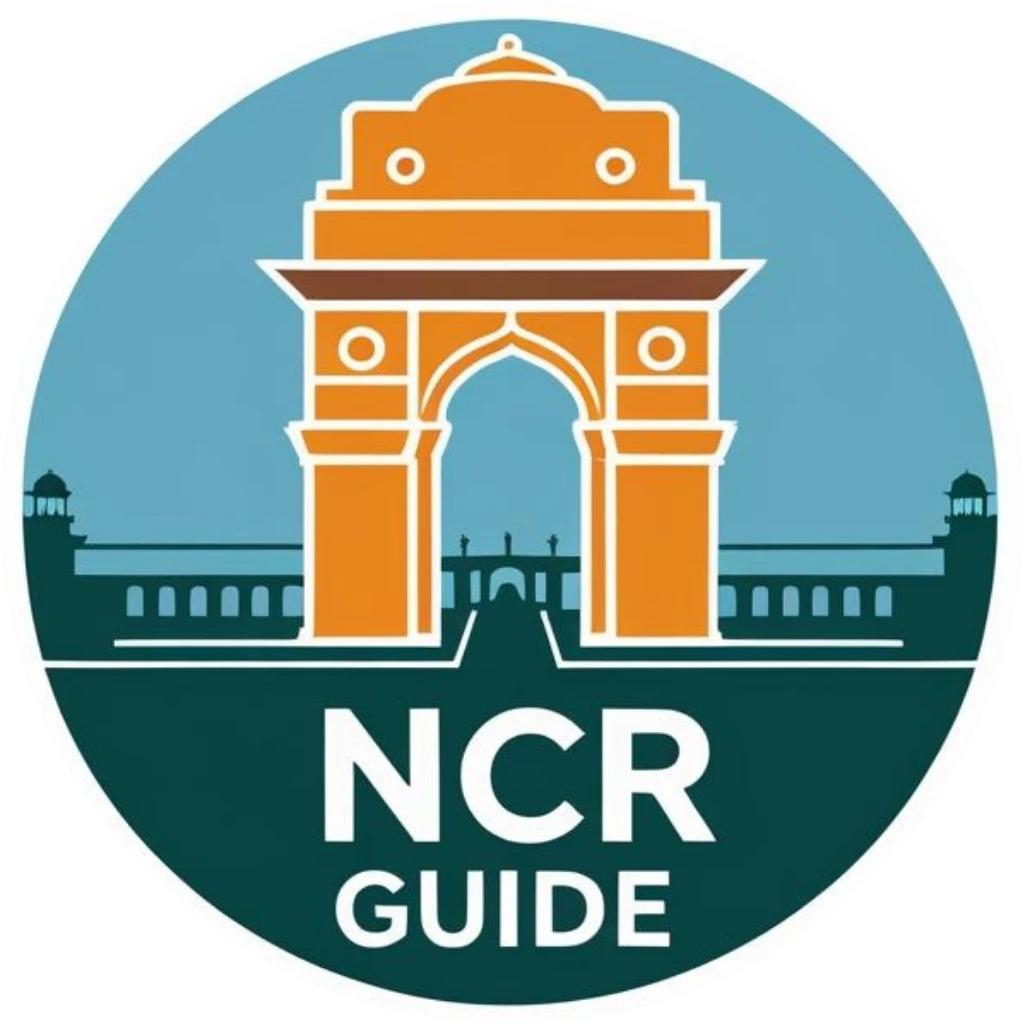The CM SHRI Schools initiative is transforming how public education works in Delhi. Launched by the Delhi Government’s Directorate of Education (DoE), this model brings innovation, equity, and world-class facilities to government schools — bridging the gap between public and private education.
In line with the National Education Policy (NEP) 2020, 75 schools across Delhi have been upgraded into CM SHRI Schools — short for Chief Minister Schools of High Excellence, Research, and Innovation.
These schools now represent a new standard in government education — combining smart infrastructure, skill-based learning, and inclusive access for every child.
What Are CM SHRI Schools?
CM SHRI Schools are part of Delhi’s effort to reimagine public education. The goal is not only to improve infrastructure but to reshape how students learn — through creativity, technology, and experiential learning.
Each CM SHRI School is equipped with:
- Smart classrooms and digital learning tools
- Robotics, science, and innovation labs
- Green, solar-powered campuses
- Barrier-free access and safety protocols
- NEP 2020-aligned multidisciplinary curriculum
“These schools are where public education meets innovation,” said a senior DoE official. “We’re building schools that prepare children not just for exams, but for life.”
What Parents and Students Should Know
Curriculum and Language
CM SHRI Schools follow a bilingual model (Hindi and English) under the CBSE framework. Subjects go beyond traditional academics to include:
- AI, coding, and design thinking
- Environmental studies and sustainability
- Communication, arts, and sports
- Entrepreneurship and vocational skills
The curriculum promotes critical thinking and real-world application, helping students prepare for modern careers and global competitiveness.
Facilities at CM SHRI Schools
| Facility Type | Key Highlights |
|---|---|
| Digital Learning | Smart boards, digital attendance, e-content libraries |
| STEM Labs | Robotics, AI, coding, applied sciences |
| Sustainability Features | Solar panels, rainwater harvesting, waste segregation |
| Accessibility | Ramps, elevators, and inclusive design for all learners |
| Recreation & Sports | Playgrounds, open gyms, sports coaching programs |
| Safety | CCTV surveillance, separate sanitation blocks, wellness rooms |
All campuses are designed for safety, accessibility, and environmental responsibility — with classrooms tailored for digital and group-based learning.
Teachers and Training
Teachers in CM SHRI Schools are handpicked and trained through specialized programs by:
- SCERT Delhi (pedagogical excellence)
- Delhi Skill and Entrepreneurship University (DSEU)
- IIT Delhi and NCERT (STEM integration)
Continuous professional development ensures educators stay updated with evolving learning technologies and teaching methodologies.
Fees and Accessibility
Education at CM SHRI Schools is completely free. Parents only pay minimal charges for uniforms, stationery, or optional activities.
There are no tuition fees or admission fees — ensuring equitable access to high-quality education for all Delhi students.
Student Wellbeing and Safety
Each CM SHRI campus follows the Delhi School Safety Policy and offers:
- 24×7 CCTV surveillance
- On-campus counselor support
- Anti-bullying protocols
- Clean, gender-separated sanitation facilities
Regular safety audits and emergency drills are conducted to ensure a secure environment.
Full List of CM SHRI Schools in Delhi (All 75)
Below is the verified list of all 75 CM SHRI Schools categorized by district for clarity.
East District (8 Schools)
- RPVV/SOSE, Surajmal Vihar – C Block, Surajmal Vihar
- SBV, Rajgarh Colony – Rajgarh Colony
- GGSSS, Phase II, Vivek Vihar – Vivek Vihar Phase II
- Govt Co-ed SSS, Chilla Gaon – Mayur Vihar Phase I
- SOE/SOSE, Khichripur – Khichripur
- SBV (Ishwar Chand) No-2, Shakarpur – Shakarpur
- RPVV/SOSE, I.P. Extension – IP Extension
- RPVV/SOSE, Gandhi Nagar – Near Jheel Chowk, Gandhi Nagar
North East District (6 Schools)
- RPVV/SOSE, Yamuna Vihar – B-Block, Yamuna Vihar
- GGSSS No-1, Tukhmirpur – Tukhmirpur
- GBSSS, Khajoori Khas – Khajoori Khas
- RPVV/SOSE, Gautampuri – Gautampuri
- RPVV/SOSE, Nand Nagri – D-1 Nand Nagri
- SKV, Mansarovar Park – Mansarovar Park, Shahdara
North District (4 Schools)
- SV (Co-ed), Lancer Road – Timarpur
- RPVV/SOSE, Civil Lines – 22A, Sham Nath Marg, Civil Lines
- RPVV/SOSE, Raj Niwas – Raj Niwas Marg
- RPVV/SOSE, Kishanganj – Nai Basti, Kishan Ganj
North West A District (8 Schools)
- SKV, A-Block, Jahangirpuri – Plot No. 5, Jahangirpuri
- RPVV/SOSE, Shalimar Bagh – BT Block, Shalimar Bagh
- SKV, Shalimar Bagh – BL Block, Shalimar Bagh
- SV/SOSE, Rana Pratap Bagh – Rana Pratap Bagh
- RPVV/SOSE, Narela – Sector A-10, Pocket 5, Narela
- S (Co-ed) V, Libaspur – 66 Futta Road, Libaspur
- SKV/SOSE, Dariyapur Kalan – Dariyapur Kalan
- SOSE, Sector 18, Rohini – Sector 18, Rohini
North West B District (8 Schools)
- SOSE, Kohat Enclave – Anandwas, Kohat Enclave
- SKV Phase 2, Ashok Vihar – Ashok Vihar Phase II
- RPVV/SOSE, Sector 21, Rohini – Sector 21, Rohini
- SOE/SOSE, Sector 17, Rohini – Sector 17, Rohini
- RPVV/SOSE, Sector 11, Rohini – Sector 11, Rohini
- SOE/SOSE, Sector 23, Rohini – Sector 23, Rohini
- Govt Co-ed SSS, Sector 2, Rohini – Sector 2, Rohini
- S Co-ed Vidyalaya, Sector 8, Rohini – E-15, Sector 8, Rohini
West District (15 Schools)
- SKV, Vikaspuri – District Centre, Vikaspuri
- RPVV/SOSE, Hari Nagar – BE Block, Hari Nagar
- GBSSS No 1, Punjabi Bagh – Punjabi Bagh
- GGSSS No 1, Tagore Garden – Tagore Garden
- SKV, Rajouri Garden Extn – Rajouri Garden Extn
- G Co-ed SSS, Karampura – Industrial Area, Karampura
- SV Co-ed, Hiran Kudna – Hiran Kudna
- SKV, Amalwas, Jwalapuri – Camp No. 4, Jwalapuri
- RPVV/SOSE, Paschim Vihar – A-6, Paschim Vihar
- G (Co-ed) SSS, RRA Baprola – Nangloi Najafgarh Road
- SOSE, Desu Colony Janakpuri – Desu Colony, Janakpuri
- SV (Co-ed), Possangipur – Janakpuri
- SKV No 2, C-Block Janakpuri – Janakpuri
- GGSSS No 2, Uttam Nagar – Uttam Nagar
- GBSSS No 2, Bindapur – Pocket E, Bindapur
South West District (13 Schools)
- G Co-ed SBV/SOSE, Sarojini Nagar – Sarojini Nagar
- SV Co-ed SSS, Nanakpura – Moti Bagh II
- Shaheed Captain Amit Verma G S (Co-ed) V, Inderpuri – C Block, Inderpuri
- SKV, Rajokari – Rajokari
- S Co-ed Vidyalaya, Nasirpur – Site 1, Nasirpur Village
- RPVV/SOSE, Sector 10, Dwarka – Dwarka
- RPVV/SOSE, Sector 19, Dwarka – Dwarka
- SOE/SOSE, Sector 22, Dwarka – Dwarka
- RPVV/SOSE, Sector 5, Dwarka – Dwarka
- SOSE, Sector 6, Dwarka – Dwarka
- GGSSS, Bijwasan – Bharthal Road
- G Co-ed SSS No 3, Palam Enclave – Palam Enclave
- AFPS, Jharoda Kalan – Jharoda Kalan
South and South East Districts (10 Schools)
- S (Co-ed) SSS, Safdarjung Enclave – B-4, Safdarjung Enclave
- SKV, Dera Village – Dera Village
- SV Co-ed, Jungpura – Samman Bazar Road, Bhogal
- SKV/SOSE, Andrews Ganj – Main Road, Andrews Ganj
- RPVV/SOSE, Lajpat Nagar – C Block, Lajpat Nagar
- RPVV/SOSE, INA Colony – C Block, Defence Colony
- SKV No 2, East of Kailash – East of Kailash
- AAA SKV No 1, Tughlakabad Extn – Tughlakabad Extn
- SOE/SOSE, Kalkaji – G Block, Kalkaji
- SOE/SOSE, Madanpur Khadar – JJ Colony Phase 2, Madanpur Khadar
Central and New Delhi Districts (3 Schools)
- SKV, Pandara Road – Pandara Park
- SV, Rouse Avenue – DDU Marg
- RPVV/SOSE, Karol Bagh – Plot No. 1, Link Road, Karol Bagh
How CM SHRI Schools Differ from Other Models
| Category | CM SHRI Schools | Schools of Excellence | Schools of Specialized Excellence |
|---|---|---|---|
| Curriculum | NEP 2020-integrated, interdisciplinary | Focused on academic excellence | Subject-specialized (STEM, Humanities, etc.) |
| Focus | Holistic development + innovation | General academic performance | Advanced stream-based learning |
| Infrastructure | Smart tech, labs, sustainability | Modern classrooms | Stream labs and research zones |
| Admission | Entrance test (merit-based) | Merit-based | Stream-specific test |
| Outcome | Global readiness, innovation mindset | Academic proficiency | Research-oriented careers |
Looking Ahead
The Delhi Government plans to expand the CM SHRI model to 200+ schools by 2027, with additional investment in teacher training, AI-enabled labs, and vocational learning.
“We’re not building schools for today — we’re building futures,” said an SCERT official.
This transformation positions Delhi as a national leader in public education reform, setting the blueprint for other Indian states to follow.
Key Resources
FAQs
What does CM SHRI stand for?
CM SHRI stands for Chief Minister Schools of High Excellence, Research, and Innovation. These are Delhi government schools redesigned to deliver world-class education through technology, skill-based learning, and sustainable infrastructure.
How many CM SHRI Schools are there in Delhi?
As of 2025, Delhi has 75 CM SHRI Schools spread across all major districts. Each campus has been upgraded with smart classrooms, digital labs, and inclusive facilities to serve as model government institutions.
What board and curriculum do CM SHRI Schools follow?
All CM SHRI Schools are affiliated with the Central Board of Secondary Education (CBSE). Their curriculum aligns with the National Education Policy 2020, combining traditional subjects with modern fields such as AI, coding, environmental science, and entrepreneurship.
Are admissions open right now?
Admissions for the 2025–26 academic year are closed. The next admission cycle will be announced by the Directorate of Education (DoE) on edudel.nic.in. Parents can follow the official portal or their district’s DoE office for updates.
What facilities are available in CM SHRI Schools?
Facilities include:
- Smart classrooms with digital boards and online learning tools
- Robotics, STEM, and innovation laboratories
- Solar power and water-harvesting systems
- Accessible design for students with disabilities
- Sports grounds, arts labs, and wellness rooms
Do students have to pay fees to study in CM SHRI Schools?
No. Education in CM SHRI Schools is completely free. Parents only pay for uniforms, stationery, or optional activities. There are no tuition or admission charges.
How are teachers selected and trained?
Teachers are chosen from Delhi’s top-performing government educators and receive continuous training through SCERT Delhi, IIT Delhi, and DSEU. Training focuses on digital teaching, child psychology, and project-based learning.
How do CM SHRI Schools differ from Schools of Excellence or SoSE?
| Feature | CM SHRI Schools | Schools of Excellence (SoE) | Schools of Specialized Excellence (SoSE) |
|---|---|---|---|
| Focus | Holistic innovation & research | Overall academic performance | Subject-specific depth (STEM, Humanities, etc.) |
| Curriculum | NEP 2020-integrated, multidisciplinary | Traditional + co-curricular | Stream-based specialization |
| Infrastructure | Smart tech, green design | Upgraded classrooms | Stream-specific labs |
Are CM SHRI Schools safe for students?
Yes. All schools comply with the Delhi School Safety Policy and include CCTV surveillance, gender-separate sanitation blocks, counselor support, and anti-bullying policies. Parents may request the latest safety audit reports from the school office.
What are Delhi’s future plans for CM SHRI Schools?
The Delhi Government plans to expand the network to 200 schools by 2027. Phase II will add new campuses in Mehrauli, Najafgarh, and Dwarka, and introduce innovation hubs for teacher training and student research.
Where can parents get official information?
- Official Portal: cmshrischool.com
- Directorate of Education: edudel.nic.in
- Helpline: 1800-11-8700 (Mon–Fri, 9 AM–5 PM)

